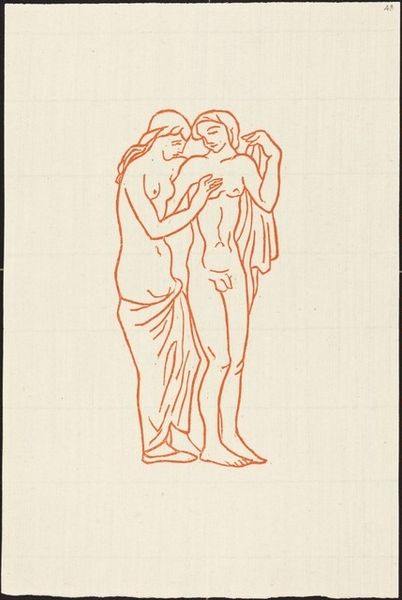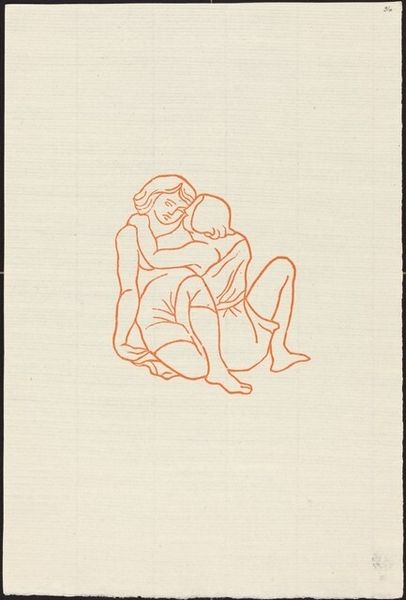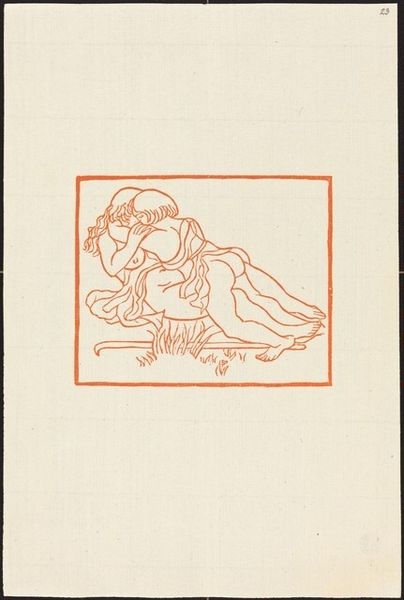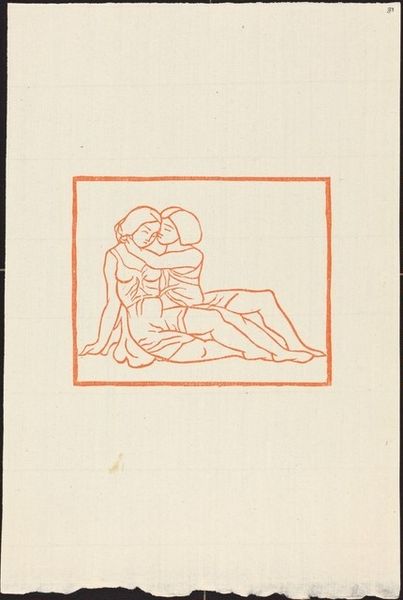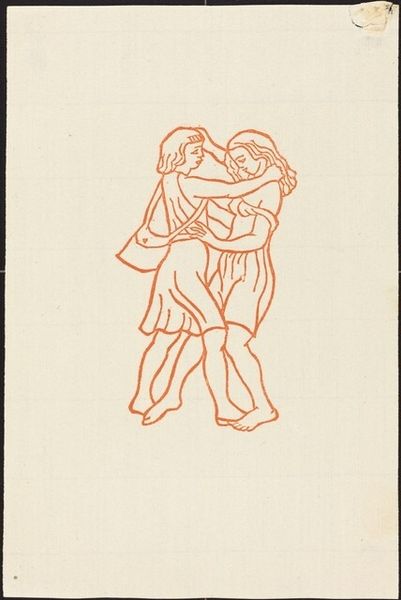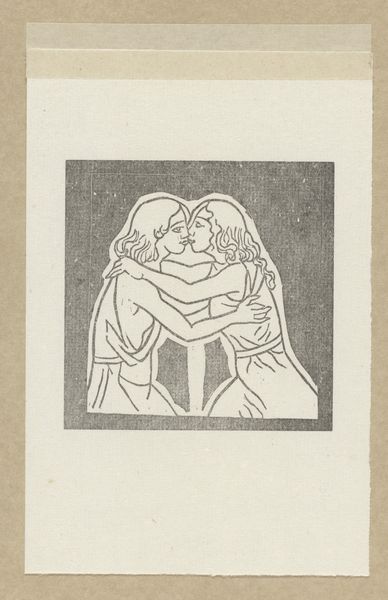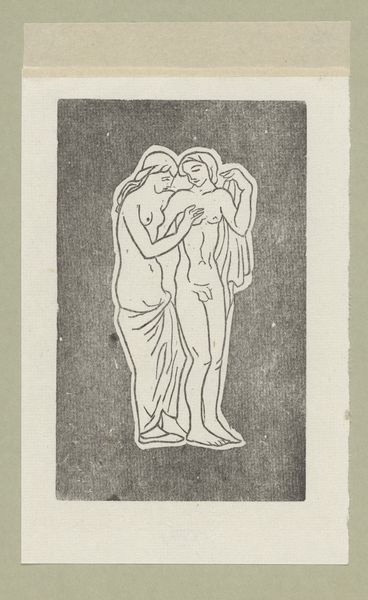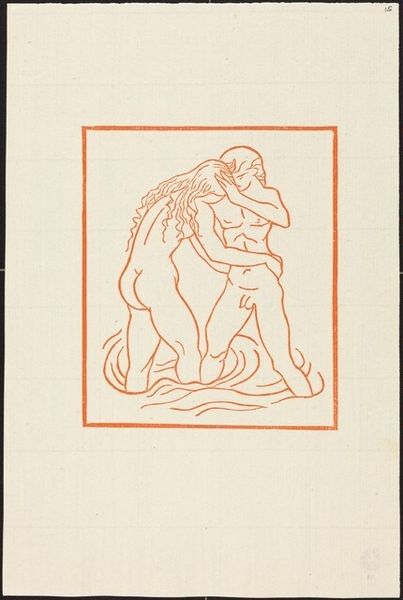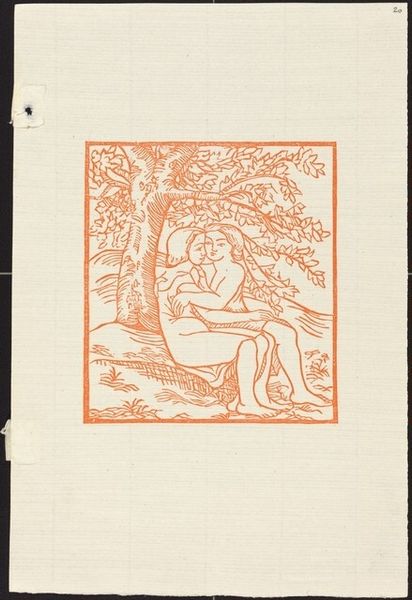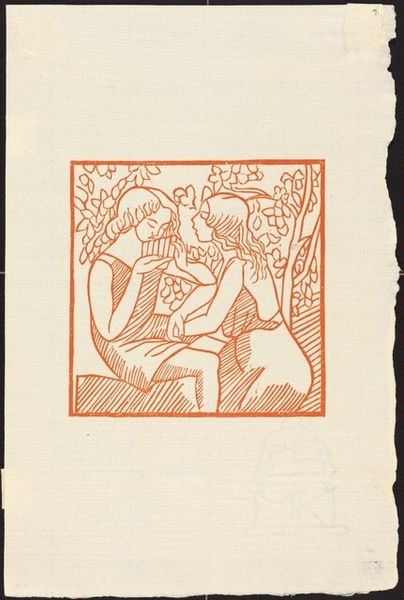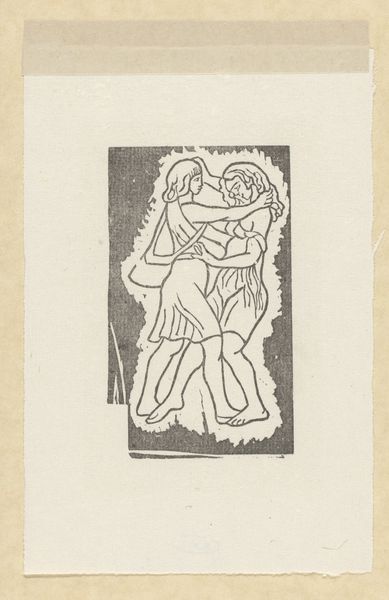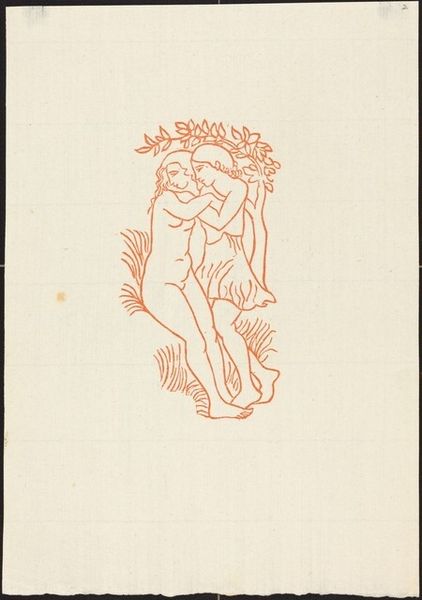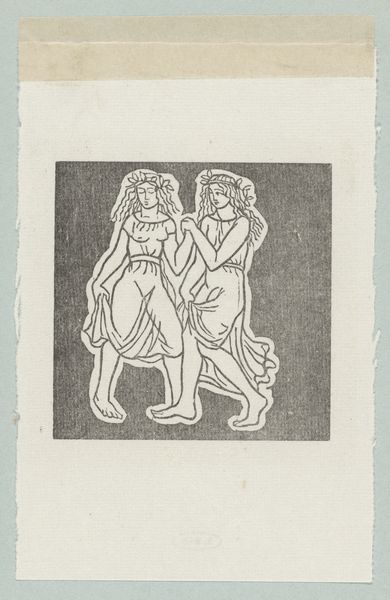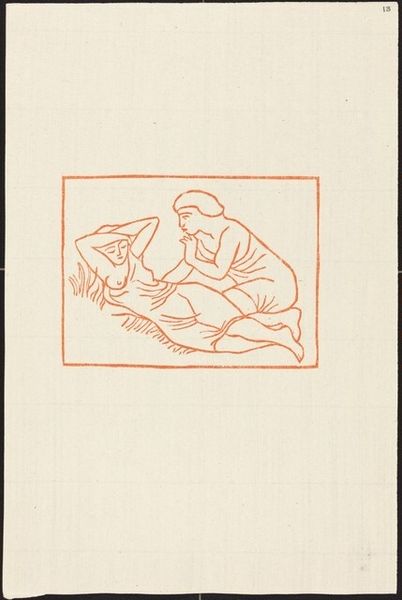
Second Book: Daphnis Rushing into the Embraces of Chloe (Daphnis et Chloe se retrouvent apres la captivite de Chloe Possibly 1937
0:00
0:00
drawing, print
#
portrait
#
drawing
# print
#
linocut print
#
erotic-art
Copyright: National Gallery of Art: CC0 1.0
Curator: This linocut print, likely created around 1937 by Aristide Maillol, is titled "Second Book: Daphnis Rushing into the Embraces of Chloe," depicting a scene of reunion and affection. Editor: My initial reaction is one of striking simplicity. The use of just a single color against the blank space, and the very direct, almost naive rendering of the figures, it's really quite powerful in its understatement. Curator: Exactly! Consider that Maillol was working during a period heavily influenced by the looming world war and a burgeoning sense of displacement. This return to pastoral themes, and the explicit celebration of physical love and same-sex sensuality—though, importantly, in a safely ancient Greek context— functions as a subtle, yet radical, statement against the repressive societal norms and the precarity of the era. Editor: The symbolic weight of the embrace itself seems so primal, doesn't it? It's not just a hug; it's a visual representation of refuge, perhaps echoing a collective desire for sanctuary and tenderness in a world edging towards turmoil. Note how the embrace seems central and is very symmetric. It has a grounding, stabilizing feel, reminiscent of some much earlier devotional icons where a strong figure seems similarly protective. Curator: The reference to Daphnis and Chloe adds another layer, situating this longing within a classical narrative of freedom from constraint, sexual awakening, and liberation from the conventions of gender roles prevalent in his contemporary France. Editor: Absolutely. The choice of the orange-red is striking. It's the color of warmth and vitality, perhaps deliberately chosen to highlight that the subject is very human affection in the face of a threatening backdrop. But at the same time it's printed. As a reproductive print, it is interesting to observe the layering and replication which opens possibilities to view this same image in differing environments. Curator: Precisely. It encourages us to view that period, to see both the anxiety and longing for simpler freedoms mirrored in this image. Editor: A very thoughtful reminder of love's role in periods of political upheaval and fear. Curator: Yes, indeed; food for thought as we move through this collection.
Comments
No comments
Be the first to comment and join the conversation on the ultimate creative platform.
